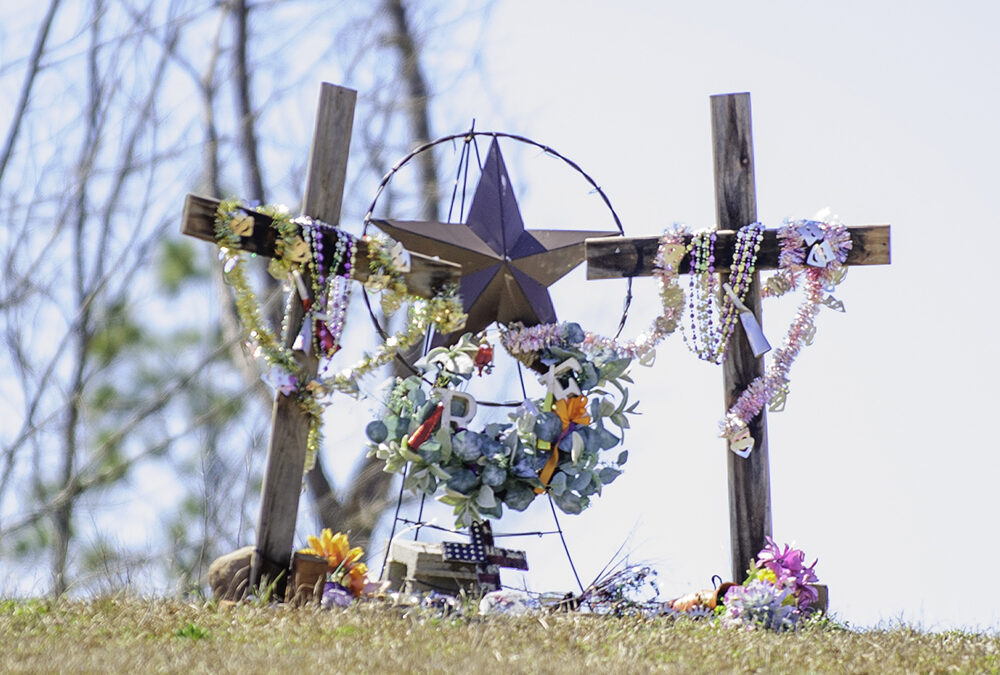BY MICHELLE KEY
MICHELLE@OPELIKAOBSERVER.COM
LEE COUNTY — March 3, 2019, is a date forever etched into the memory of most Lee County residents, especially those in Beauregard and Smiths Station. Twenty-three lives were lost, more than a hundred people were injured and hundreds of families were displaced due to damage to their homes when two long-track tornadoes barreled through Lee County like the freight train they sounded like. The first and largest of the two was just shy of a mile wide and traveled nearly 70 miles over a period of one hour and 16 minutes. The second followed almost the exact same path, further exacerbating the damage.
Lee County Emergency Management Agency (LCEMA) Director Rita Smith was serving as the Public Information Officer (PIO) in 2019 and Kathy Carson was the LCEMA director. Smith recalled how the agency had been preparing for the storms for several days leading up to that Sunday afternoon and said she arrived at the EMA center around 9:30 a.m. Sunday and to start monitoring the weather.
Smith said the first tornado watch occurred at 11:03 a.m. and at 2:03 p.m. the first of the two tornadoes was on the ground.
“Within just a few moments, the second tornado was on the ground, and we were already starting to receive calls over the radios of damage, and then news of fatalities started coming in,” Smith said. “I remember going into Carson’s office and she was on both the phone and a radio. I held up two fingers and watched as the color drained from her face.”
That number would change over the next several hours as first responders and emergency personnel worked to systematically search to account for everyone.
During that time, the national media had picked up the story and was calling to verify the information. Smith said the first press conference was held around midnight Sunday night in Beauregard.
One of the biggest tasks for those on the ground on March 3 was accounting for everyone.
“We had some people that weren’t home [Sunday afternoon],” Smith said. “We had some people who are out of town. We had a couple of people that were in the hospital; you know, regular life things.”
More than 60 people with injuries were treated at East Alabama Medical Center according to an interview conducted in the weeks following March 3.
Smith and others set up a Joint Information Center — a JIC — and started working to coordinate information. A lot of things were happening all at once. Search and rescue efforts were being coordinated, volunteers were being organized to assist families with various needs, and donations for those affected as well as food and supplies for the first responders began pouring in as early as Sunday afternoon.
Within the first 48 hours, plans were forming for then President Donald Trump and FirstLady Melania Trump to visit and tour the area on Friday and an unprecedented number of news outlets from around the world converged on Beauregard.
“Four hundred and fifty-seven agencies were documented over that first week,” Smith said. “We had calls from Greece, the BBC and many others.”
Press briefings were held daily that first week according to Smith.
“Gov. Kay Ivey came twice and spoke; Lee County Sheriff Jay Jones spoke; our coroner spoke, the utility company spoke.”
The state of Alabama EMA, as well as FEMA, both arrived to assist with stabilizing the recovery. The Disaster Recovery Centers were established and provided people with a place to go to seek assistance. One of the big needs was emergency housing for those that had been displaced. Two hundred and thirty homes were destroyed and another 141 suffered major damage.
Donations and support from many organizations began pouring into the community. Over the course of the last five years, more than $2.5 million has been donated towards the rebuilding of homes. The Poarch Creek Indian Tribe donated $184,000 for funeral expenses for all the victims.
With FEMA declaring the area a disaster zone, many families have been able to seek funding to aid in the recovery process.
Smith said approximately 100 individual storm shelters have been installed using the Hazard Mitigation Grant money since 2019. Life safety is No. 1 in a hazard mitigation plan.
“I think it is a plus to have those,” she said. “At the first of the year, we had a small tornado – and well, there is no ‘small tornado’ to people in Beauregard – that took part of that [same] path and those people that had some damage, they said ‘I got in my shelter. There is my shelter right there, I went and got in it.’ Those comments does your heart good as a emergency manager. When you see that came to fruition, they got it, they used it. Lives saved.”
Smith said the most important information she wants the community to know is that they should never realize on the outdoor warning sirens.
“Our app became more relevant after March 3,” Smith said. “The app to me is great, wherever you are, you will be able to get the push notifications. I just want you to be sure that you can get the information.”
Community shelters are still a need for the area. Southern Union and Auburn University both have public shelters that are always open during a tornado watch and warning. The Auburn one accepts pets. It is the only one in the county that does so.
‘We don’t have a lot of community shelters,” Smith said. “We rely heavily on our faith-based shelters for opening a shelter when we have a watch. Our churches can change each time. We have to call them ahead of time and ensure they will be available. Different variables may affect a church’s ability to be open.”
The important thing to know is that EMA wants people to go to shelters when a watch is issued and not to wait until there is an active tornado warning.
“All in all I think we have shown improvements in notifications and improvements on people having their own safe shelters to go. I do think we have citizens that are very traumatized by bad weather because of what they’ve gone through. Smiths Station did not have any fatalities, but they had homes with structural damage, debris and they had a lot of scared people.”
I think it bonded people. I think there is a common bond with those citizens that went through that, Smith said. “It is a bond that is there came from tragedy.”


